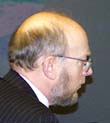|
|
|
|
to measure nanohenry inductors - RF Cafe Forums
|
| shari
|
|
Post subject: to measure nanohenry inductors
Posted: Wed Apr 02, 2008 6:15 am
|
|
Joined: Wed Apr 02, 2008
5:55 am
Posts: 1
Location: pune,india
|
|
Hi!!
I have designed LNA for 1420MHz by
tunning microstrip lengths and inductors in GENESYS.
These inductors are in nanohenry(values
are:16,24,390,58) and made by wounding copper wire
on former.
Can u suggest me a practical
method to measure these inducors since i don't have
any LCR or Qmeter in nanohenry range.It's really
urgent.
Thanking you,
shari
|
|
| |
|
 |
|
nubbage |
|
Post subject:
Posted: Mon Apr 14, 2008 11:11 am
|
|
| |
| General |
 |
Joined: Fri Feb 17, 2006
12:07 pm
Posts: 304
Location: London UK
|
|
There are ways.
Do you have a signal generator,
and maybe a scanning receiver covering VHF?
If you can arrange to create a series tuned circuit
using accurate close % tolerance capacitors, then
if you feed the generator into the series circuit
across the series-connected L and C, a receiver
connected across the circuit will produce a minimum
signal as it is almost a short circuit across the
50 ohms.
Since you know the C value accurately
and the L value approximately, this narrows the
search range down to a few MHz on the receiver.
Then when you know F very precisely, you can correct
the L value using the well-known resonance formula.
Hope that helps.
|
|
| |
|
 |
|
FSomma |
|
Post subject:
Posted: Wed May 14, 2008 3:08 pm
|
|
|
|
Yes, a series LC circuit will provide you an easy
way to meas the L. Just be careful to have a well
known C (with low tolerance), place the L an the
C as close as you can to each other, and be sure
to place them into a line with the correct characteristic
impedance. And if you want to be more accurate,
once you have a first approach to the L value, reselect
the C in order to have the resonance infrequency
around the frequency you will be using the L (1420MHz),
remember that L value also is function of the frequency.
Good luck! ( www.viewrd.com.ar) |
|
Posted 11/12/2012
|
|
|
|